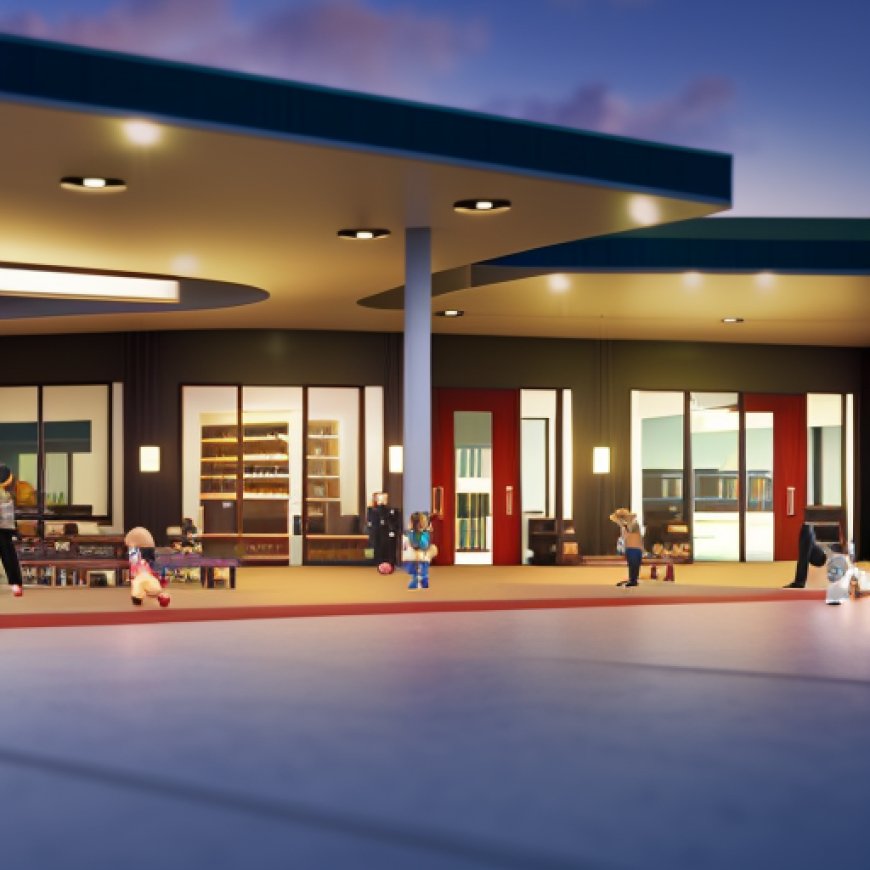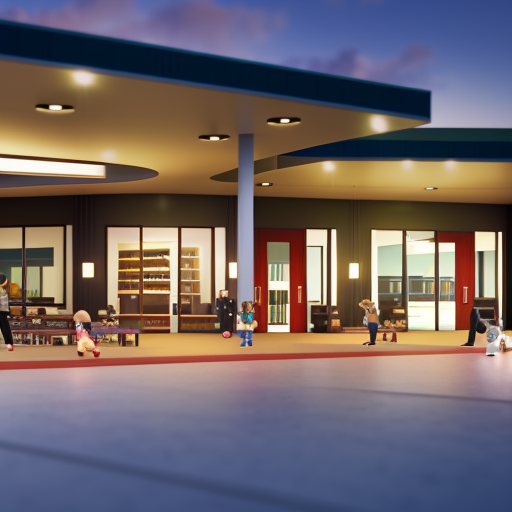New early learning center to offer foundational skills in Coastal Bend
Boys and Girls Clubs Early Learning Center in Coastal Bend Caller Times


The Boys and Girls Clubs of the Coastal Bend Early Learning Center
Expanding Services for Early Childhood Education
The new Boys and Girls Clubs of the Coastal Bend Early Learning Center is set to open Tuesday, expanding services to offer children foundational skills in early childhood education.
Community members gathered outside the renovated 15,000-square-foot building at 10102 South Padre Island Drive in Flour Bluff on Thursday to celebrate and tour the new facility. It will cater to the developmental needs of young children ranging from infancy to 5 years old in a supportive environment.
Kim Barrientos, president and CEO of BGCCB, lauded the community and board in supporting the effort to build capacity to provide life-changing opportunities for young people from nearby neighborhoods to discover and learn.
“This is an incredibly significant moment for us as we expand our mission to serve the youth of the Coastal Bend,” she said. “Today, we’re not just unlocking our doors. We’re unlocking bountiful potential.”
Emphasizing Sustainable Development Goals
The Early Learning Center (ELC) will play a crucial role in achieving the Sustainable Development Goals (SDGs) set by the United Nations. By offering foundational skills in early childhood education, the ELC aligns with SDG 4: Quality Education, which aims to ensure inclusive and equitable quality education for all.
Curriculum and Learning Programs
ELC’s new programming will feature the Hatch curriculum, designed to engage and instruct children while providing teachers with real-time data that helps document student progress.
Students will access digital learning programs on tablets to create play-based technologies in seven subjects, including language and communication, literacy, and social emotional development.
Children will be able to participate in guided practice experiences to develop math and literacy skills scaffolded with visual and verbal support and daily individualized instruction. The integrated software will enable teachers to monitor cognitive, social, and academic skills as they progress to kindergarten.
Partnerships and Expansion
Corpus Christi ISD has signed on as a partner of BGCCB, furthering the impact of the Early Learning Center. Beginning in August, the BGCCB will collaborate with 13 schools to provide after-school care and summer learning, contributing to SDG 4.2: Access to Quality Early Childhood Development, Care, and Pre-primary Education.
ELC has hired two teachers to instruct 3-year-old students and 4- to 5-year-olds, respectively, as well as a childcare development professional. Plans include hiring a paraprofessional to enhance the learning experience for the children.
A Safe and Supportive Environment
After the ceremony, guests toured the building’s newly transformed interior, a former doctor’s office that now includes multiple rooms for children of different ages, imagination stations, Hatch floors, Demco furniture, hardline phones, and bulletproof glass to ensure the safety of learners.
The Early Learning Center will serve as an ancillary facility to the BGCCB headquarters at 3902 Greenwood Drive.
SDGs, Targets, and Indicators
| SDGs | Targets | Indicators |
|---|---|---|
| SDG 4: Quality Education | 4.2: By 2030, ensure that all girls and boys have access to quality early childhood development, care, and pre-primary education so that they are ready for primary education | The use of the Hatch curriculum to engage and instruct children while providing teachers with real-time data that helps document student progress |
| SDG 4: Quality Education | 4.2: By 2030, ensure that all girls and boys have access to quality early childhood development, care, and pre-primary education so that they are ready for primary education | The implementation of digital learning programs on tablets to create play-based technologies in seven subjects, including language and communication, literacy, and social emotional development |
| SDG 4: Quality Education | 4.2: By 2030, ensure that all girls and boys have access to quality early childhood development, care, and pre-primary education so that they are ready for primary education | The provision of guided practice experiences to develop math and literacy skills scaffolded with visual and verbal support and daily individualized instruction |
| SDG 4: Quality Education | 4.2: By 2030, ensure that all girls and boys have access to quality early childhood development, care, and pre-primary education so that they are ready for primary education | The monitoring of cognitive, social, and academic skills as children progress to kindergarten using integrated software |
| SDG 4: Quality Education | 4.b: By 2020, substantially expand globally the number of scholarships available to developing countries, in particular least developed countries, small island developing States and African countries, for enrolment in higher education, including vocational training and information and communications technology, technical, engineering and scientific programmes, in developed countries and other developing countries | No indicators mentioned in the article |
| SDG 17: Partnerships for the Goals | 17.17: Encourage and promote effective public, public-private and civil society partnerships, building on the experience and resourcing strategies of partnerships | The partnership between Boys and Girls Clubs of the Coastal Bend (BGCCB) and Corpus Christi ISD to provide after-school care and summer learning |
1. Which SDGs are addressed or connected to the issues highlighted in the article?
- SDG 4: Quality Education
- SDG 17: Partnerships for the Goals
2. What specific targets under those SDGs can be identified based on the article’s content?
- Target 4.2: By 2030, ensure that all girls and boys have access to quality early childhood development, care, and pre-primary education so that they are ready for primary education
- Target 4.b: By 2020, substantially expand globally the number of scholarships available to developing countries, in particular least developed countries, small island developing States and African countries, for enrollment in higher education, including vocational training and information and communications technology, technical, engineering and scientific programs, in developed countries and other developing countries
- Target 17.17: Encourage and promote effective public, public-private and civil society partnerships, building on the experience and resourcing strategies of partnerships
3. Are there any indicators mentioned or implied in the article that can be used to measure progress towards the identified targets?
- The use of the Hatch curriculum to engage and instruct children while providing teachers with real-time data that helps document student progress
- The implementation of digital learning programs on tablets to create play-based technologies in seven subjects, including language and communication, literacy, and social emotional development
- The provision of guided practice experiences to develop math and literacy skills scaffolded with visual and verbal support and daily individualized instruction
- The monitoring of cognitive, social, and academic skills as children progress to kindergarten using integrated software
- The partnership between Boys and Girls Clubs of the Coastal Bend (BGCCB) and Corpus Christi ISD to provide after-school care and summer learning
4. SDGs, Targets, and Indicators
| SDGs | Targets | Indicators |
|---|---|---|
| SDG 4: Quality Education | 4.2: By 2030, ensure that all girls and boys have access to quality early childhood development, care, and pre-primary education so that they are ready for primary education | The use of the Hatch curriculum to engage and instruct children while providing teachers with real-time data that helps document student progress |
| SDG 4: Quality Education | 4.2: By 2030, ensure that all girls and boys have access to quality early childhood development, care, and pre-primary education so that they are ready for primary education | The implementation of digital learning programs on tablets to create play-based technologies in seven subjects, including language and communication, literacy, and social emotional development |
| SDG 4: Quality Education | 4.2: By 2030, ensure that all girls and boys have access to quality early childhood development, care, and pre-primary education so that they are ready for primary education | The provision of guided practice experiences to develop math and literacy skills scaffolded with visual and verbal support and daily individualized instruction |
| SDG 4: Quality Education | 4.2: By 2030, ensure that all girls and boys have access to quality early childhood development, care, and pre-primary education so that they are ready for primary education | The monitoring of cognitive, social, and academic skills as children progress to kindergarten using integrated software |









